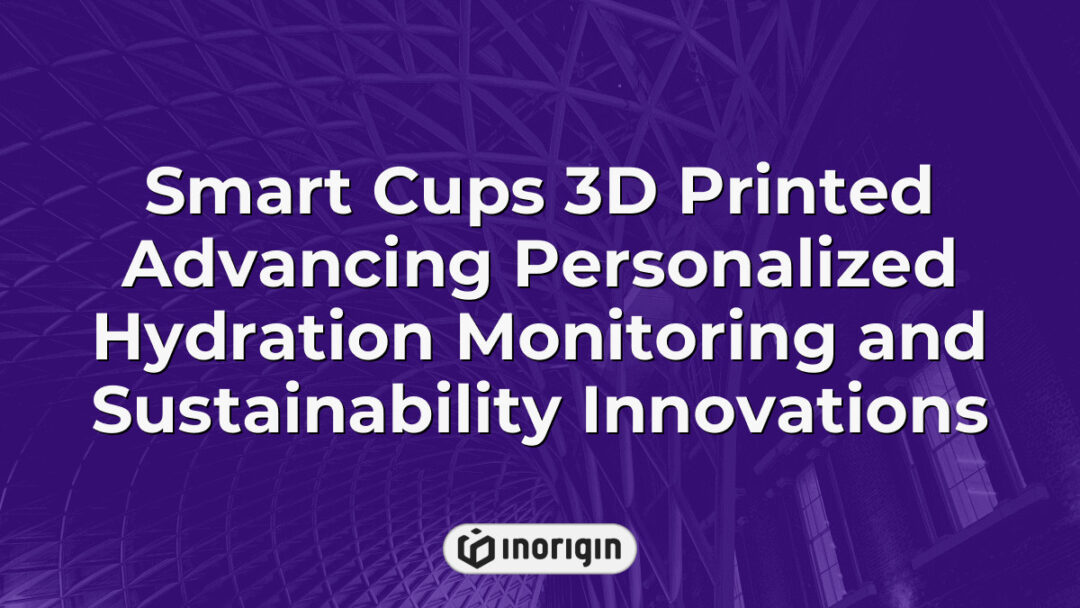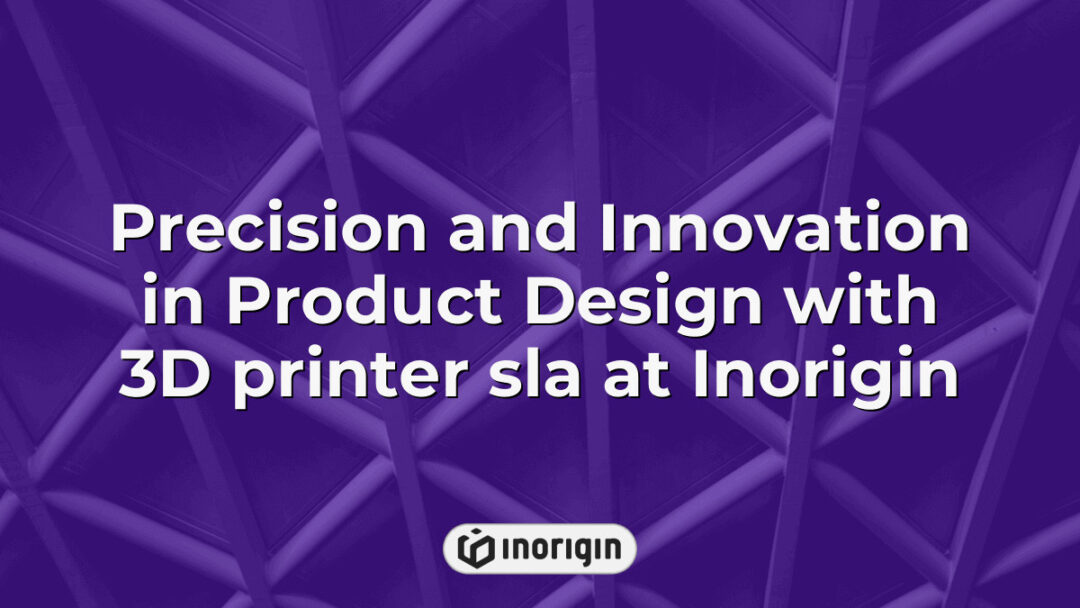The intersection of advanced manufacturing and consumer convenience has reached a remarkable milestone with the advent of 3D-printed smart cups, an innovation that promises to revolutionize the way individuals interact with everyday drinkware. These technologically sophisticated vessels not only embody cutting-edge design through their bespoke 3D printing capabilities but also integrate sensors and connectivity features capable of monitoring fluid temperature, composition, and consumption patterns in real-time. As sustainability concerns escalate and personalized consumer experiences become paramount, the emergence of smart cups offers compelling implications for both environmental impact and market dynamics within the beverage industry. This article will explore the technological underpinnings, potential applications, and broader societal ramifications associated with the proliferation of these intelligent drinking containers.
| Aspect | Key Takeaway |
|---|---|
| Technology Overview | Smart cups 3D printed through advanced manufacturing fuse embedded sensors and connectivity to deliver real-time monitoring of temperature, composition, and consumption patterns. |
| Materials Used | Cutting-edge polymers like TPU and PLA combine flexibility, durability, and sustainability while supporting sensor integration in smart cups. |
| User Experience | Personalized hydration tracking and interactive app feedback enhance daily beverage consumption through dynamic, user-centered design. |
| Environmental Impact | 3D printing minimizes waste and enables biodegradable or recyclable materials, supporting eco-friendly product development with measurable sustainability benefits. |
| App Integration | Seamless connectivity with mobile applications provides hydration analytics, consumption goals, and tailored drink recommendations to elevate user engagement. |
| Maintenance and Security | Proper cleaning with gentle methods and advanced encryption protocols ensure device longevity while safeguarding user data privacy. |
| Future Trends | Upcoming features include flavor detection, advanced temperature regulation, self-cleaning surfaces, and enhanced design customization enabled by 3D printing. |
Exploring The Technology Behind 3D Printed Smart Cups
The intersection of technology and everyday objects is exemplified in the innovative domain of smart cups, which have been revolutionized through 3D printing. As society increasingly seeks to enhance user experience and efficiency in routine activities, these technologically advanced vessels offer unique features such as temperature regulation, hydration tracking, and interactive interfaces. Notably, the application of 3D printing technology allows for rapid prototyping and customization of smart cups, exhibiting both functional design and aesthetic appeal tailored to individual preferences. Furthermore, this manufacturing process facilitates the integration of sensors and microcontrollers within the cup structure, leading to a seamless melding of form and function. By harnessing advancements in materials science alongside digital fabrication techniques, the development of intelligent drinking vessels presents opportunities for enhancing consumer engagement while promoting health-conscious behaviors. The implications extend beyond mere convenience; they signify a shift towards smarter living environments where even commonplace items are equipped with capabilities that respond dynamically to user needs.
Innovative Materials Used In 3D Printed Smart Cups
The innovative materials utilized in the production of 3D printed smart cups are pivotal to enhancing their functionality and sustainability. Firstly, polymers such as thermoplastic polyurethane (TPU) and polylactic acid (PLA) have gained prominence due to their flexibility and ease of printing; these materials contribute significantly to the design of a cup that can conform to varying shapes while maintaining structural integrity during use. Furthermore, PLA stands out as an environmentally friendly option because it is derived from renewable resources and can be processed into biodegradable plastic cups, thereby mitigating environmental concerns associated with traditional plastics. Additionally, advanced composites incorporating conductive materials allow for integrated sensors capable of monitoring beverage temperatures or assessing liquid composition. Thus, the synergy between these innovative materials not only optimizes performance but also aligns with sustainable practices within the realm of printed beverage containers. Through ongoing research and development, the field continues to evolve, highlighting the importance of material selection in realizing practical applications for 3D printed smart cups.
How Smart Cups Are Revolutionizing Everyday Beverage Consumption
In an era characterized by rapid technological advancement, the emergence of smart cups is poised to transform the landscape of beverage consumption. These innovative vessels—crafted through sophisticated 3D printing techniques—enhance the user experience by integrating intelligent features that respond dynamically to various contexts. For instance, imagine a sleek, ergonomically designed cup that not only measures temperature but also tracks hydration levels or recommends optimal drinking times based on individual habits. As such advancements are developed in printed beverages, these products embody a blend of functionality and convenience, allowing for real-time data tracking that fosters improved personal health management. Furthermore, as the market embraces thermochromic materials and sensors embedded directly into 3D-printed designs, consumer interaction with their daily drinks evolves from passive enjoyment to active engagement with health-conscious choices. The pervasive influence of smart cups illustrates a significant shift toward personalized beverage consumption experiences, thereby redefining how individuals interact with their preferred liquids in contemporary society.
Sustainability And Environmental Impact Of 3D Printed Smart Cups
The emergence of 3D printed smart cups presents a compelling intersection between innovative design and environmental stewardship. As these unique vessels for energy drinks evolve, they embody not just functionality but also the potential to mitigate ecological impacts traditionally associated with beverage consumption. The process of 3D printing allows for precise material utilization, thereby reducing waste generated from conventional manufacturing methods; this efficiency aligns closely with sustainability objectives by promoting resource conservation. Moreover, many manufacturers are increasingly adopting biodegradable or recyclable materials in their production processes, further reinforcing the commitment to environmentally friendly practices. Transitioning from traditional plastic cup usage to 3D printed alternatives opens avenues for decreasing carbon footprints while providing consumers with enhanced customization options—encouraging a more conscientious approach to beverage consumption that resonates deeply within modern society’s growing eco-awareness. Ultimately, the integration of 3D technology into cup design reflects a broader movement towards sustainable practices that harmonize technological advancement with environmental responsibility, positioning these smart cups as pivotal players in the future landscape of consumer goods.
Future Trends And Developments In Smart Cup Technology
The adage “the only constant is change” aptly encapsulates the trajectory of smart cup technology, particularly in relation to advancements afforded by 3D printing. As innovation progresses, several future trends are emerging that promise to enhance the functionality and user experience associated with these items. Notably, developments in sensor integration stand at the forefront:
- Enhanced sensory capabilities:
- Flavor detection mechanisms may evolve, allowing cups to assess and adjust beverage flavors based on individual preferences.
- Advanced temperature control sensors could enable real-time monitoring of drink temperatures , ensuring optimal drinking experiences.
Customization possibilities:
- Increased design customization through sophisticated 3D printing techniques will allow consumers to create personalized designs that cater to aesthetic preferences while maintaining practicality.
- Material innovations could lead to customizable cup materials optimized for specific beverages or health-related concerns.
Sustainability-driven features:
- The introduction of biodegradable printing materials may decrease environmental impact significantly.
- Smart cups may soon incorporate self-cleaning technologies utilizing UV light or antibacterial coatings derived from advanced material properties.
Through convergence within these domains, the potential for smart cups underscores a transformative synergy between technology and consumerism, propelling both practical utility and enjoyment into new dimensions. These developments illustrate how evolving technological capacities can be harnessed not just for improved design but also for enriching flavor experiences tailored to diverse consumer needs.
Frequently Asked Questions
How Do 3D Printed Smart Cups Integrate With Mobile Apps?
The integration of 3D printed smart cups with mobile applications represents a significant advancement in consumer beverage technology, engaging consumers in both functionality and interactivity. Statistics indicate that approximately 74% of consumers express interest in personalized drinking experiences facilitated by smart devices, highlighting the market’s demand for innovation in everyday items like cups. This growing interest is evidenced through several key features offered by these advanced products:
- Sensors embedded within the cups monitor temperature and liquid levels.
- Mobile applications provide real-time feedback on hydration status and recommend consumption goals based on individual user profiles.
- Data analytics allow users to track their beverage intake over time, fostering healthier habits.
Given these attributes, the interplay between 3D printed smart cups and mobile apps enhances user engagement while promoting health awareness. Through seamless connectivity via Bluetooth or Wi-Fi, these devices can transmit data directly to smartphones, ensuring that users remain informed about their drinking patterns. As technological advancements continue to evolve, such integrations will likely pave the way for further innovations that enhance consumer interaction with seemingly mundane objects in daily life.
What Types Of Beverages Are Compatible With Smart Cups?
The emergence of 3D printed smart cups has revolutionized the consumption and monitoring of beverages, likening them to a modern-day philosopher’s stone that transforms ordinary liquids into interactive experiences. These technologically advanced products are compatible with an array of beverages, which include water, juices, sodas, coffee, tea, and alcoholic drinks such as beer and wine. Notably, compatibility can vary depending on specific design features and built-in sensors utilized in each cup model. For instance, some smart cups may have temperature control capabilities suited for hot beverages like coffee or tea while being equally effective for cold drinks. Moreover, manufacturers often consider the chemical properties of various liquids when designing these innovative vessels to ensure safe usage without compromising the function or taste of the beverage consumed. Consequently, understanding the limitations related to different types of fluids is essential for consumers seeking to fully leverage the benefits offered by 3D printed smart cups. Thus, while their versatility is significant, it is imperative that prospective users remain informed about which particular beverages will optimize their experience with this technology.
Can The Technology Be Employed In Other Consumer Products Besides Cups?
The concept of smart technology is akin to a burgeoning tree, with roots extending far beyond its initial branches. While the most prominent application at present involves smart cups designed for beverage monitoring and temperature control, this innovative technology holds significant potential in other consumer products. For instance, advancements in sensor integration and data analytics could be seamlessly transferred to diverse items such as food storage containers that track freshness or kitchen appliances that interactively read recipe parameters. Furthermore, wearables utilizing similar principles may emerge, capable of offering real-time health monitoring through hydration tracking or nutritional content assessment. As interest grows in integrating intelligent features into daily life, it becomes increasingly evident that the multifunctional capabilities of smart technologies will enhance various consumer products across multiple sectors. Hence, the reach of these innovations is likely to expand further, stimulating both market growth and consumer engagement in ways previously unimagined.
What Are The Maintenance Requirements For Smart Cups?
The maintenance of smart cups, akin to nurturing a delicate ecosystem, requires attention to various operational facets to ensure optimal functionality. These sophisticated vessels often integrate electronic components that necessitate careful cleaning procedures; therefore, traditional methods may be inadequate. Users are advised to utilize soft cloths and mild detergents while avoiding abrasive materials that could damage sensitive sensors or conductive pathways integrated within the cup’s structure. Regular inspection of charging ports and connectivity systems is also imperative, as moisture and debris accumulation can hinder performance over time. Additionally, battery care must not be overlooked; monitoring charge cycles prevents depletion and extends lifespan. When pondering the intricacies involved in sustaining such advanced products, it becomes clear that adherence to specified maintenance protocols plays a crucial role in retaining the innovative features these smart cups offer throughout their usable life.
How Do Smart Cups Ensure User Data Privacy And Security?
The tension between technological innovation and user privacy is acutely illustrated in the realm of smart cups, particularly those constructed through 3D printing technology. On one hand, these devices leverage advanced connectivity features to collect and analyze data on beverage intake patterns; on the other hand, they face increasing scrutiny regarding how effectively they protect sensitive personal information. To address concerns about data breaches and unauthorized access, manufacturers of smart cups implement a variety of security measures. These often include encryption protocols for data transmission, secure pairing processes with mobile devices, and robust authentication mechanisms that require users to verify their identity before accessing certain functionalities. Moreover, many brands adhere to established privacy standards and regulations—such as GDPR or CCPA—to ensure compliance while fostering consumer trust. This dual approach not only safeguards individual user data but also enhances user experience by providing personalized insights without compromising confidentiality. As developments in both 3D printing technologies and digital security continue to evolve, maintaining this delicate balance remains paramount for the integrity of smart cup innovations.
Conclusion
The emergence of 3D printed smart cups symbolizes a transformative wave in beverage consumption, merging technology and practicality. These innovations shimmer like stars on the horizon of sustainability, offering not only enhanced user experiences but also fostering an environmentally conscious future where convenience dances harmoniously with ecological responsibility.
Related posts:
- Engine Management Products Designed for Precision Performance and Reliability
- Ecm & cluster update-engine monitoring logic product improvement Driving Real-Time Efficiency and System Reliability at Inorigin
- How Can IoT Integration Transform Product Design and Engineering to Drive Innovation and Precision at Inorigin
- What Products Do Chemical Engineers Make Across Pharmaceuticals, Energy, and Advanced Technologies
- Engineered Data Products Transforming Business Intelligence in the Digital Era
- Mastering Scalability and Precision with Engineered Data Products at Inorigin




